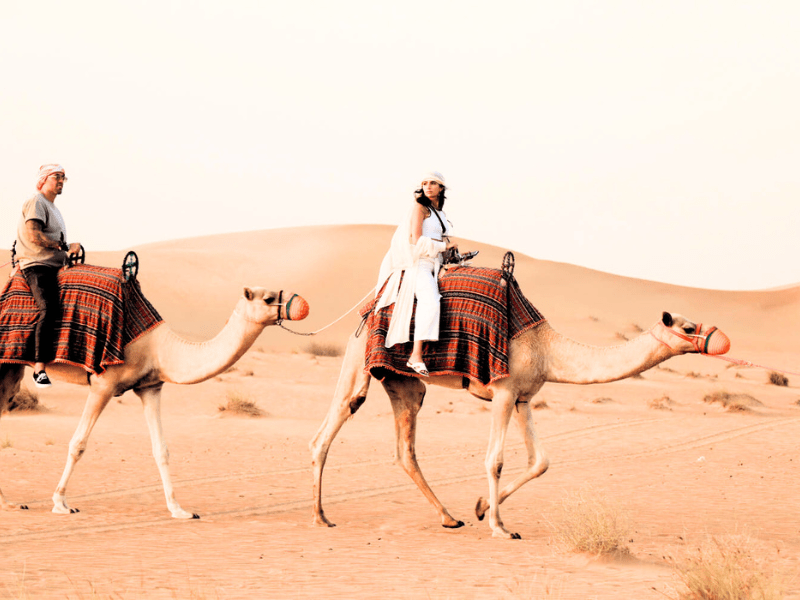Embarking on a desert safari is an adventure that encapsulates the allure of the vast, sandy expanses, offering a unique blend of excitement, cultural immersion, and natural beauty. Among the various activities that a desert safari promises, the camel ride stands out as an iconic experience, transporting visitors back in time to an era when these majestic creatures were the primary mode of transport across the arid landscapes.
The Essence of a Desert Safari
A desert safari is much more than a journey through the sands. It is an immersive experience that often includes dune bashing in rugged 4×4 vehicles, witnessing breathtaking sunsets, enjoying traditional Arabian hospitality in Bedouin-style camps, and partaking in cultural performances such as belly dancing and Tanoura shows. The heart of this adventure, however, lies in the camel ride, which provides a serene and authentic way to explore the desert.
The Camel: The Ship of the Desert
Camels, often referred to as the “ships of the desert,” have been integral to desert life for centuries. Their unique physiological adaptations make them perfectly suited for the harsh desert environment. Riding a camel offers a slow, rhythmic journey that allows travelers to connect deeply with the desert surroundings. As you sway gently with each step the camel takes, there’s an opportunity to absorb the tranquility and timeless beauty of the desert.
A Journey Through Time
The experience of riding a camel in the desert is akin to stepping into a living history book. For centuries, camel caravans were the lifelines of desert trade routes, carrying spices, textiles, and other goods across vast and inhospitable terrains. Today, a camel ride allows travelers to relive these ancient traditions, offering a glimpse into the lives of the nomadic tribes who once roamed these lands.
The Experience
A typical camel ride begins with an introduction to your camel and guide. These guides are often locals who are deeply knowledgeable about the desert and its history. Mounting the camel can be a bit daunting at first, as camels rise to their feet in a jerky, two-step motion. Once atop, however, the elevated vantage point provides a spectacular view of the rolling dunes.
As the camel train sets off, the pace is leisurely, allowing ample time to marvel at the changing colors of the sand and sky. The journey often leads to a secluded spot where you can witness the mesmerizing desert sunset. The vibrant hues of the setting sun reflecting off the sands create a magical panorama, perfect for photography or quiet contemplation.
Cultural Encounters
Many desert safaris include visits to Bedouin-style camps where you can experience traditional Arabian culture. Here, you can enjoy a range of activities such as henna painting, trying on traditional clothing, and savoring a feast of Middle Eastern cuisine. Storytellers and musicians provide entertainment, enriching the evening with tales and tunes of the desert.
Conservation and Respect
While enjoying the desert safari, it’s crucial to approach it with respect for the environment and the local culture. Tour operators often emphasize sustainable practices to ensure that the natural beauty and cultural heritage of the desert are preserved for future generations. This includes minimizing waste, respecting wildlife, and supporting local communities.
Conclusion
A desert safari with a camel ride is not just a touristic activity; it’s an immersion into a way of life that has existed for millennia. It is an adventure that offers a blend of thrill, serenity, and cultural richness. Whether you are seeking the thrill of exploring uncharted dunes or the peace of a desert sunset, this experience promises memories that will last a lifetime. As you dismount your camel and the day draws to a close, the stars begin to sprinkle the night sky, adding a final touch of magic to an unforgettable journey.


